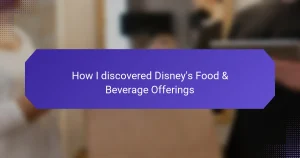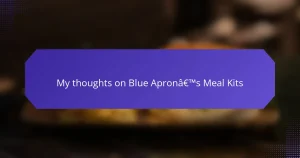Key takeaways
- Cooking challenge recipes inspire creativity and personal growth, encouraging experimentation with new dishes and local ingredients.
- Organizing recipe collections by categories or meal types streamlines meal planning and enhances cooking experiences.
- Sharing recipes with a community fosters connection, making cooking more enjoyable and collaborative.
- Embracing adaptability and learning from cooking failures can build confidence and creativity in the kitchen.
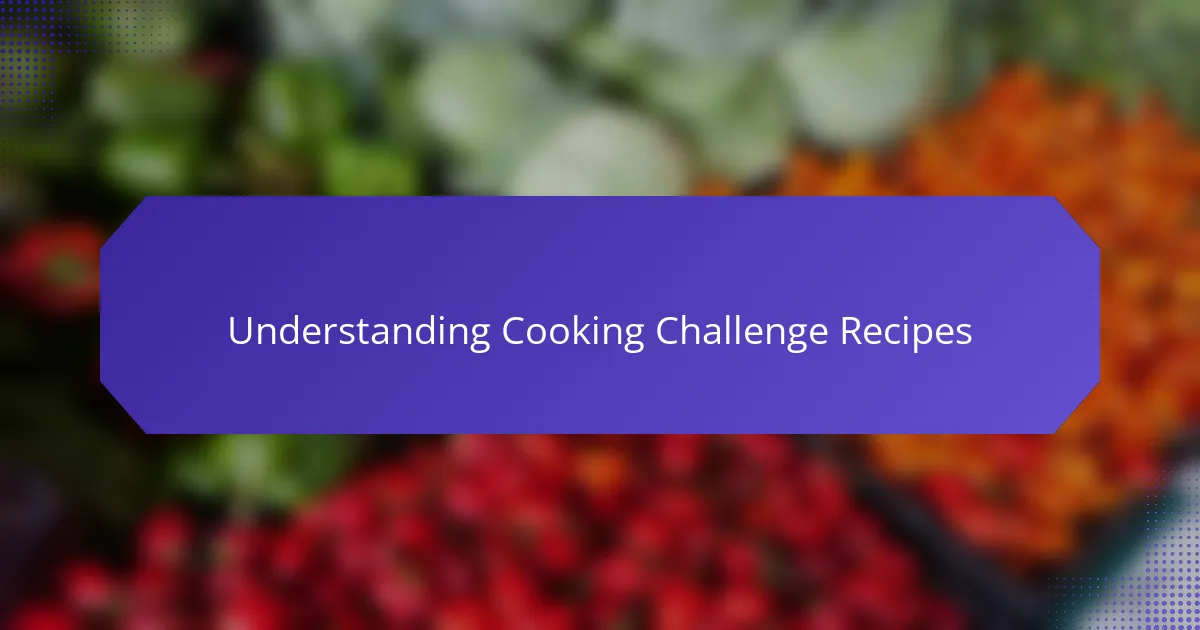
Understanding cooking challenge recipes
Cooking challenge recipes are designed to inspire creativity and push culinary boundaries. I’ve found that participating in these challenges transforms cooking from a routine task into an exciting adventure. There’s something invigorating about stepping out of my comfort zone and tackling a new recipe that I wouldn’t normally consider.
From my experience, here are some key elements to consider when engaging with cooking challenge recipes:
- Curiosity: Embrace the unknown; I always learn something new.
- Versatility: These recipes often encourage the use of seasonal or local ingredients, which can elevate the dish.
- Community: Sharing your outcomes can create a supportive network of fellow food enthusiasts.
- Presentation: Aesthetics matter; I love experimenting with plating to make meals pop.
- Personal Growth: Each recipe teaches me patience and resilience; I’ve turned kitchen failures into valuable lessons.
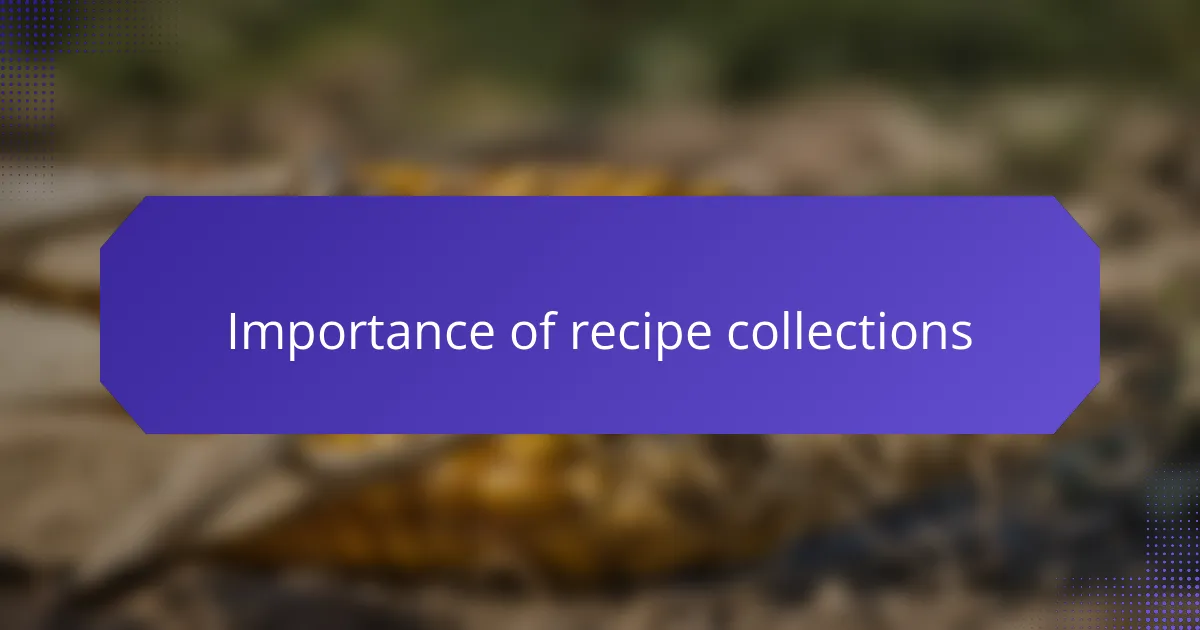
Importance of recipe collections
The importance of recipe collections cannot be overstated, especially for someone like me who enjoys exploring a diverse range of cuisines. Having curated collections allows me to keep track of my culinary adventures and ensures I can repeat successes while avoiding recipes that fell flat. When I look back at my recipe archives, I’m often reminded of the joy and memories each dish brought, whether it was a cozy family dinner or a spontaneous gathering with friends.
Organizing recipes also streamlines my cooking process. Instead of searching randomly, I can quickly find a dish that suits the occasion or the ingredients I have on hand. It’s like having a personal chef guide me through my culinary journey, making the experience more enjoyable and less stressful.
Certainly, there are many ways to approach recipe collections, and I find comparing methods can be quite enlightening.
| Method | Benefits |
|---|---|
| Digital Collections | Easy to organize, search, and access from anywhere. |
| Physical Recipe Box | Tangible feel; nostalgic aspect of handwritten recipes fosters connection. |
| Cooking Blogs | Access to community feedback and trends; inspiration from diverse cultures. |
| Cookbooks | Visually appealing; often curated with an author’s unique perspective. |
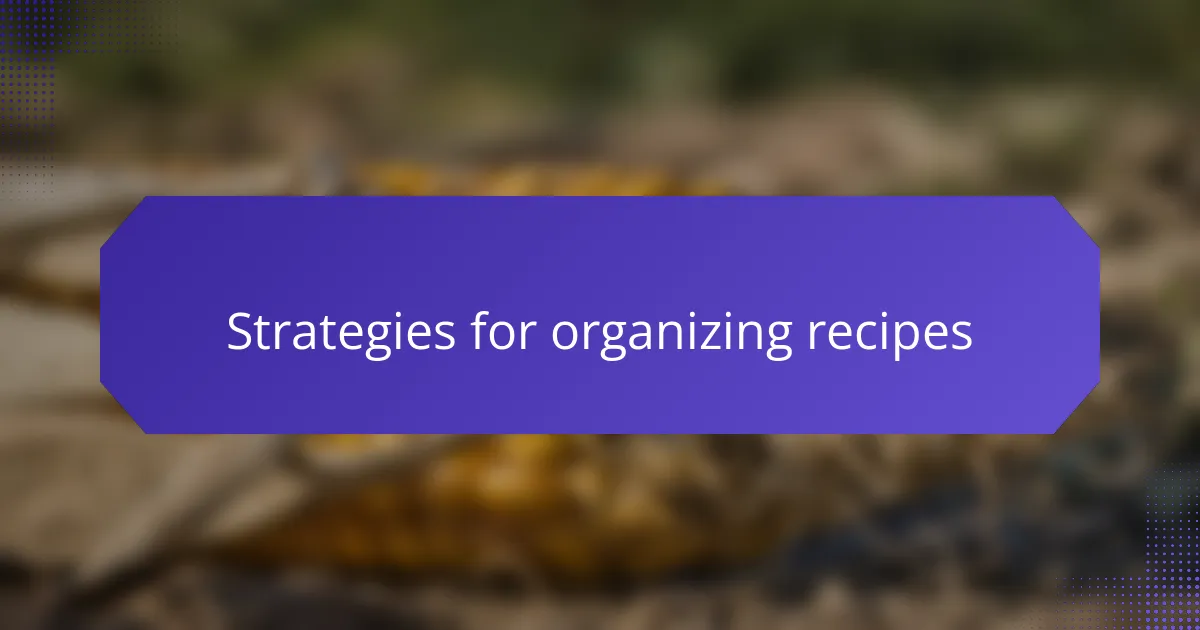
Strategies for organizing recipes
When organizing my recipe collections, I like to categorize them by meal type or main ingredient. This strategy helps me locate recipes quickly, especially on busy days when I need inspiration fast. For instance, having a dedicated section for quick weeknight dinners makes my decision-making so much easier.
I also utilize digital tools that allow me to tag and search my recipes. Over time, I’ve discovered how much I appreciate being able to pull up “30-minute meals” or “vegetarian options” with just a few clicks. It’s like having a virtual sous chef at my fingertips, ready to suggest the perfect dish based on my current cravings or what I have in my pantry.
While I enjoy the efficiency of digital organizing, I still treasure my handwritten recipes tucked in a charming recipe box. Each note tells a story, recalling the joy of cooking with a loved one or the zesty surprise of a dish that became a family favorite. Don’t you think there’s something uniquely satisfying about flipping through those handwritten notes? It makes the cooking process feel more personal and connected to my culinary journey.

Tips for selecting recipes
When selecting recipes for my cooking challenges, I always start by considering my mood and the occasion. For instance, do I want a comforting dish that reminds me of family gatherings, or am I in the mood to experiment with something adventurous? I find that aligning the recipe with my feelings can lead to a more satisfying cooking experience. Have you ever noticed how certain dishes can evoke memories or emotions?
I also pay close attention to seasonal ingredients. There’s something truly delightful about cooking with fresh produce at its peak. When I select recipes that highlight what’s available in my local market, I feel like I’m not just cooking but also connecting with the season’s rhythm. This seasonality often adds an extra layer of flavor and excitement to the dish. Can you imagine a summer salad bursting with ripe tomatoes, or a hearty winter stew warming the soul?
Another tip I’ve picked up is to think about the complexity of the recipe. I ask myself if I have the time and energy to tackle a multi-step dish or if I need something simpler. Sometimes, I appreciate the challenge of a more intricate recipe, while other days, I just want something quick and satisfying. It’s all about finding a balance that fits my current life pace. How do you approach choosing between a culinary challenge and a quick weeknight fix?

Managing recipe collections effectively
Managing recipe collections effectively can feel overwhelming at times, especially with the vast array of options available. Personally, I’ve found that the key lies in creating a system that works for you. For instance, I categorize my recipes into sections like “Quick Weeknight Dinners” and “Weekend Specials,” which helps me quickly find inspiration based on the time I have available.
To further streamline my collection, I’ve developed a few strategies:
- Digital Organization: Use apps or platforms like Google Sheets to log recipes. This allows for easy searching and sorting.
- Recipe Ratings: After trying a recipe, I rate it from 1 to 5 stars. This helps me remember which dishes the family loved—and which ones to skip!
- Seasonal Separation: I group recipes by season to bring variety and freshness to our meals throughout the year.
- Personal Notes: I include notes on modifications or sides that worked well with the dish, adding a personal touch that enhances my cooking experience.
- Recipe Box: I maintain a physical recipe box for family favorites, creating a tangible connection to beloved meals and memories.
These methods have genuinely transformed my cooking experiences, making meal planning much more enjoyable and less stressful.
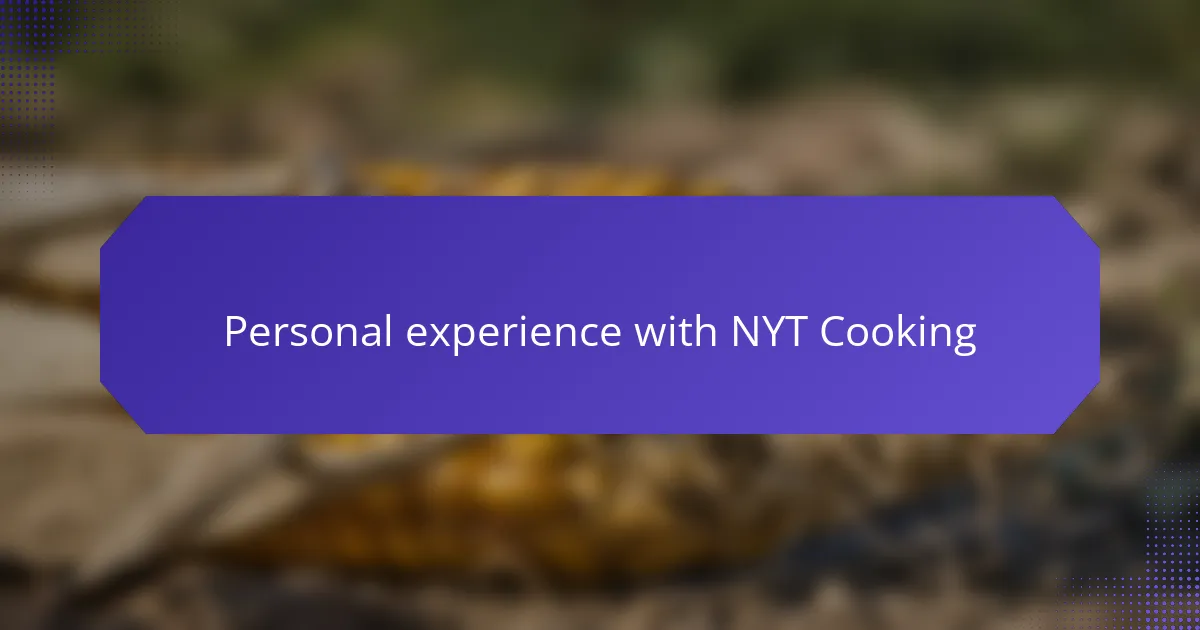
Personal experience with NYT Cooking
When I first discovered NYT Cooking, I was immediately drawn to its vast collection of recipes. I remember flipping through the app and my excitement grew as I stumbled upon a lemon tart recipe that reminded me of my grandmother’s kitchen. That sense of nostalgia pushed me to not just cook but to also explore new culinary territories that I had never ventured into before.
Throughout my journey with NYT Cooking, I learned to manage my recipe collections effectively. I vividly recall the satisfaction of organizing my favorites, which not only made meal planning easier but also turned cooking into a delightful adventure. Each recipe became a stepping stone into creating meals that sparked joy both in my kitchen and at the dinner table.
Here’s a comparison of my approach to managing recipe collections versus the traditional way:
| My Approach | Traditional Recipe Management |
|---|---|
| Digital collections through NYT Cooking | Printed recipe cards or books |
| Easy to search and customize | Limited to what you have on hand |
| Access to video tutorials and tips | No multimedia support |
| Can easily share with friends | Harder to share physical copies |

Lessons learned from recipe management
When I first dove into managing my NYT Cooking recipe collections, I quickly learned the importance of organization. Initially, I would bookmark recipes haphazardly, and it felt overwhelming to find what I wanted. Now, I categorize my favorites by cuisine and occasion, which has not only made cooking more enjoyable but has also saved me a lot of time.
Another lesson I’ve learned is the value of adaptability. There were times when a recipe didn’t go as planned. Instead of feeling defeated, I embraced those moments and learned to tweak ingredients or methods. This practice has made me a more creative and confident cook.
Lastly, I’ve discovered that sharing my collections with friends enhances the cooking experience. We often exchange notes and tips, which creates a sense of community around food that I cherish. Cooking has become not just a task but a collaborative joy, reminding me of the importance of connection through shared meals.
| Lesson | Description |
|---|---|
| Organization | Categorizing recipes by cuisine and occasion simplifies the process. |
| Adaptability | Learning to adjust recipes encourages creativity and builds confidence in the kitchen. |
| Community | Sharing collections with friends enhances the cooking experience and fosters connections. |
